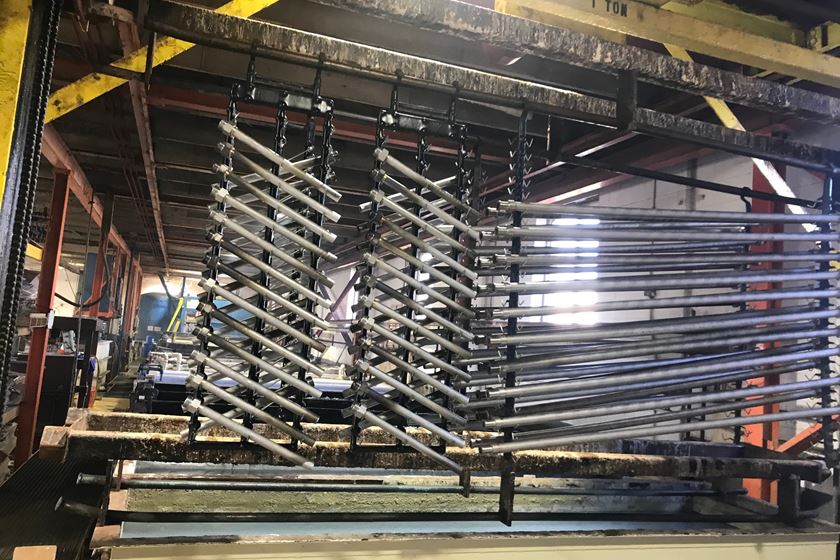Supreme Court Reviews OSHA COVID-19 Workplace Vaccine Standard
The U.S. Supreme Court hears oral argument on OSHA COVID-19 Vaccine, Testing and Face Coverings and issues temporary stay.
#nasf #regulation
On January 13, 2022, the United States Supreme Court issued a decision to stay OSHA’s COVID-19 Vaccination and Testing Emergency Temporary Standard (ETS) that applies to employers with at least 100 employees. Here is a link to the opinion of the Court.
As a result, the enforcement of the ETS has been halted and there are no regulatory obligations to meet under the rule, such as employers needing to determine each employee’s vaccination status and requiring unvaccinated employees to wear face coverings and be subject to weekly COVID testing.
Only a Temporary Stay
While the Court’s decision technically is only a temporary stay of the ETS pending a full review of the legal challenges to the rule by the Sixth Circuit (such as whether the Constitution would allow OSHA to impose the broad-ranging requirements of the ETS), the Court appeared to signal that it believes OSHA exceeded its statutory authority in issuing a workplace standard to address an issue of broad public health. The Court specifically noted that:
"Although COVID–19 is a risk that occurs in many workplaces, it is not an occupational hazard in most. COVID–19 can and does spread at home, in schools, during sporting events, and everywhere else that people gather.
That kind of universal risk is no different from the day-to-day dangers that all face from crime, air pollution, or any number of communicable diseases. Permitting OSHA to regulate the hazards of daily life—simply because most Americans have jobs and face those same risks while on the clock—would significantly expand OSHA’s regulatory authority without clear congressional authorization."
Additional Arguments and Outlook
The Court also stated:
"That is not to say OSHA lacks authority to regulate occupation-specific risks related to COVID–19. Where the virus poses a special danger because of the particular features of an employee’s job or workplace, targeted regulations are plainly permissible. . . . But the danger present in such workplaces differs in both degree and kind from the everyday risk of contracting COVID–19 that all face.”
For now, implementation of the rule is blocked and the ETS requirements are not in effect. The substantive legal issues on whether OSHA has authority to issue such a broad-ranging ETS will be argued in the U.S. Court of Appeals for the Sixth Circuit.
If you have any questions or would like additional information, please contact Jeff Hannapel or Christian Richter with NASF at jhannapel@thepolicygroup.com or crichter@thepolicygroup.com.
This update is courtesy of the National Association for Surface Finishing (NASF). For more information or to become a member, visit nasf.org.
RELATED CONTENT
-
AES Research Project #41: Part 4: Adhesion Failure of Electrodeposited Coatings on Anodized Aluminum Alloys
An SEM study of peel-test adhesion specimens from plated coatings on anodized aluminum shows that failure can be categorized in three different modes: (1) specimens exhibiting poor adhesion strength, which fail at the anodic film/coating interface; (2) specimens with good adhesion strength, which fail by local fracture of the anodic film and (3) specimens with excellent adhesion strength , which fail when the applied load is greater than the strength of the alloy substrate. The effect of anodizing parameters and alloy composition on peel test failure are discussed.
-
The Study of Copper Anodes in Acid and Cyanide Plating Baths
The 1956 Carl E. Huessner Gold Medal Award was given to Charles Faust and William H Safranek for Best Paper appearing in Plating or the AES Technical Proceedings in 1955, and their paper is republished here in a series on the AES/AESF/NASF Best Paper Awards. Their work involves an evaluation of anodes for copper plating at the time when OFHC anodes were first emerging in use.
-
Plastics and Plating on Plastics [1944]
This republished 1944 AES convention paper presents an historic perspective of the early days of plastics in surface finishing - using them and plating on them, in the waning years of World War II. The discussion reviews the uses of plastics in plating equipment and processing at that time, as well as the coating of the plastics themselves, with accompanying application photos. You will note that today’s conventional plating-on-plastics processes lay far in the future. Surprisingly, CVD processes are discussed.















